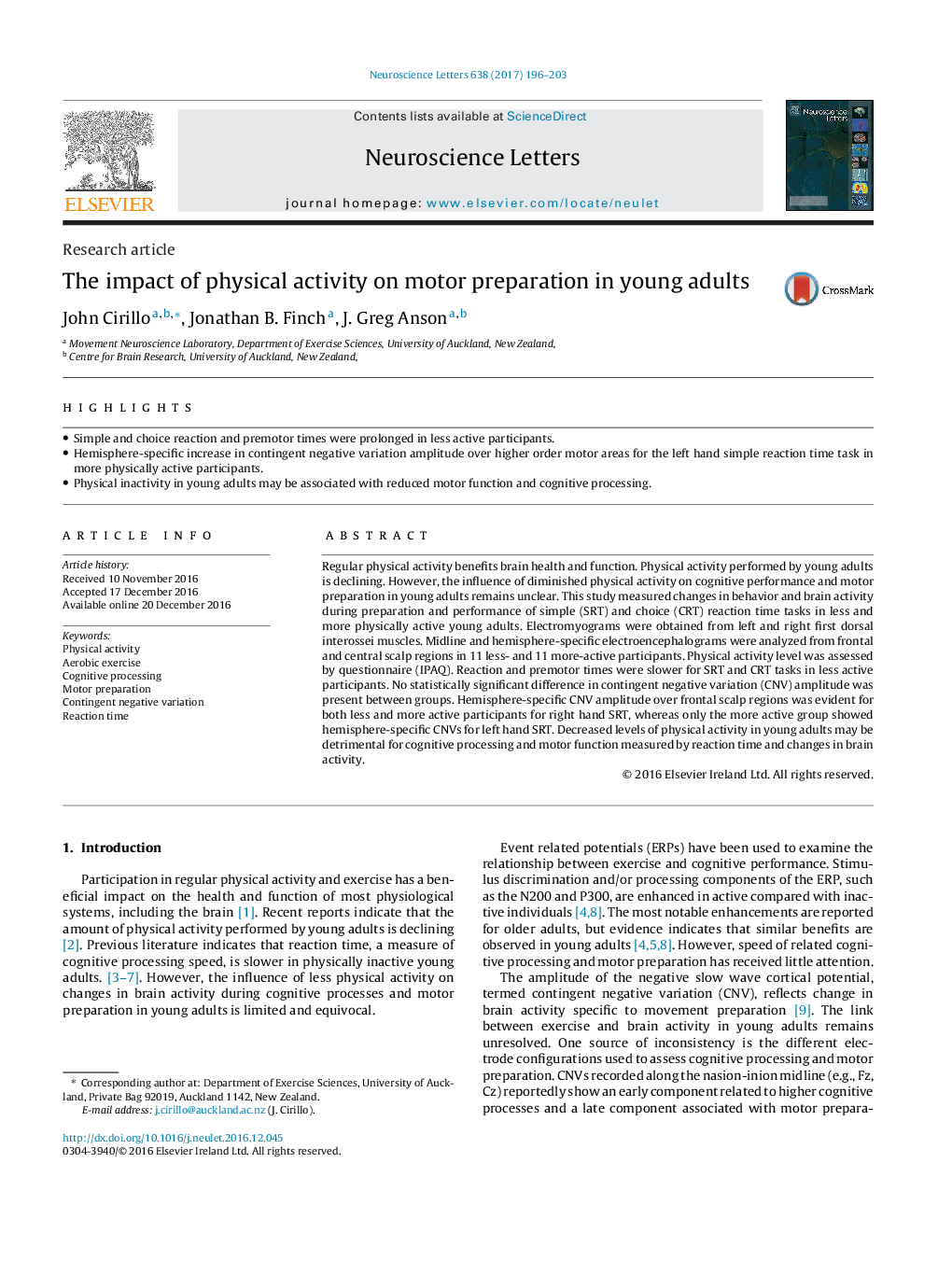| Article ID | Journal | Published Year | Pages | File Type |
|---|---|---|---|---|
| 5738871 | Neuroscience Letters | 2017 | 8 Pages |
â¢Simple and choice reaction and premotor times were prolonged in less active participants.â¢Hemisphere-specific increase in contingent negative variation amplitude over higher order motor areas for the left hand simple reaction time task in more physically active participants.â¢Physical inactivity in young adults may be associated with reduced motor function and cognitive processing.
Regular physical activity benefits brain health and function. Physical activity performed by young adults is declining. However, the influence of diminished physical activity on cognitive performance and motor preparation in young adults remains unclear. This study measured changes in behavior and brain activity during preparation and performance of simple (SRT) and choice (CRT) reaction time tasks in less and more physically active young adults. Electromyograms were obtained from left and right first dorsal interossei muscles. Midline and hemisphere-specific electroencephalograms were analyzed from frontal and central scalp regions in 11 less- and 11 more-active participants. Physical activity level was assessed by questionnaire (IPAQ). Reaction and premotor times were slower for SRT and CRT tasks in less active participants. No statistically significant difference in contingent negative variation (CNV) amplitude was present between groups. Hemisphere-specific CNV amplitude over frontal scalp regions was evident for both less and more active participants for right hand SRT, whereas only the more active group showed hemisphere-specific CNVs for left hand SRT. Decreased levels of physical activity in young adults may be detrimental for cognitive processing and motor function measured by reaction time and changes in brain activity.
